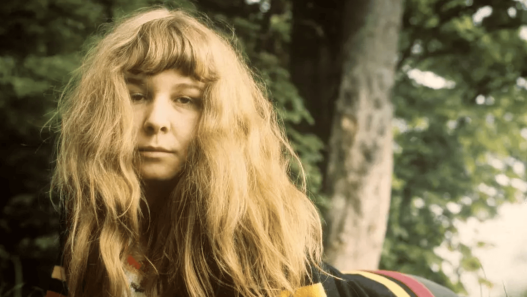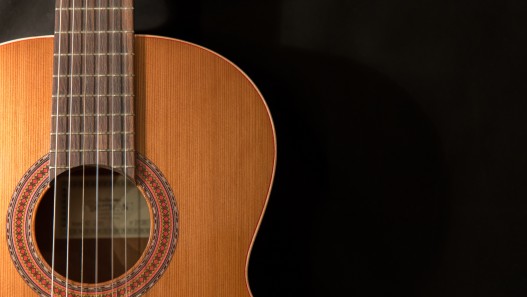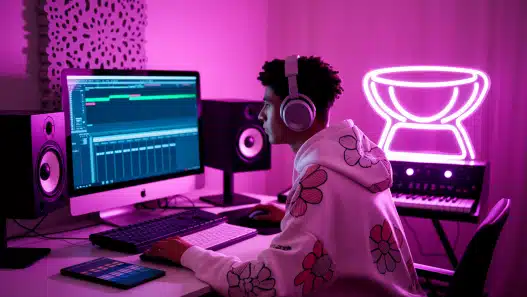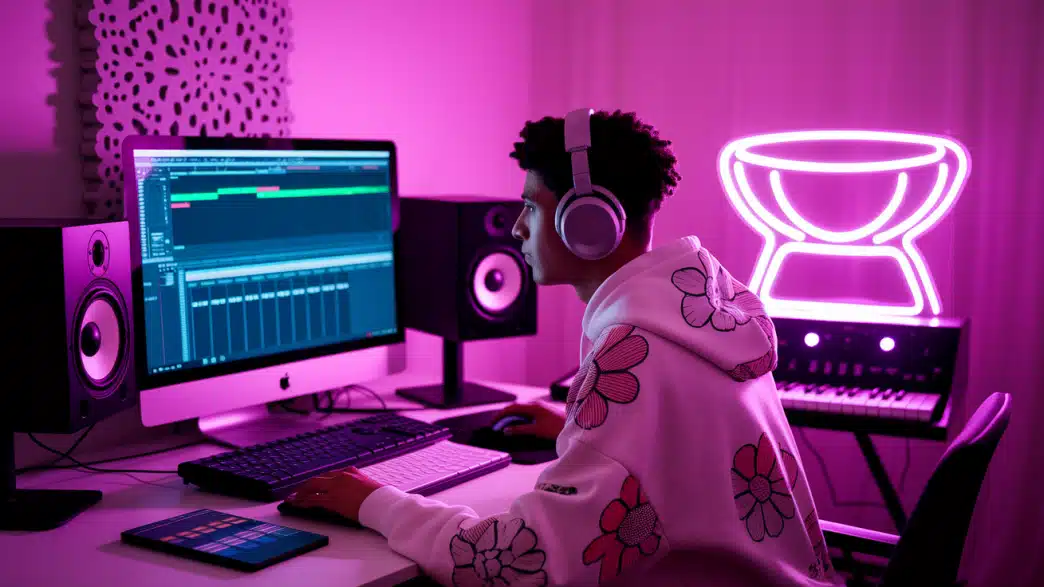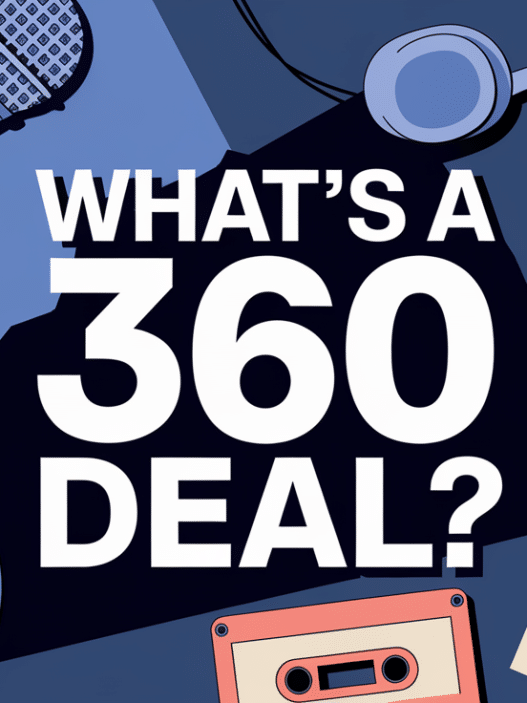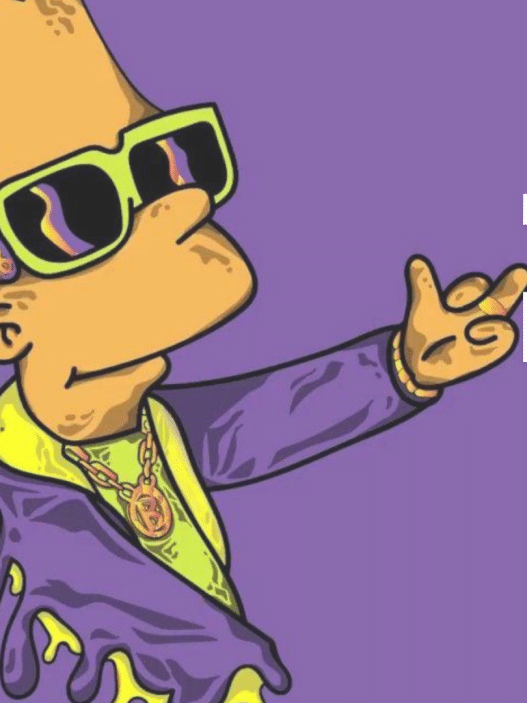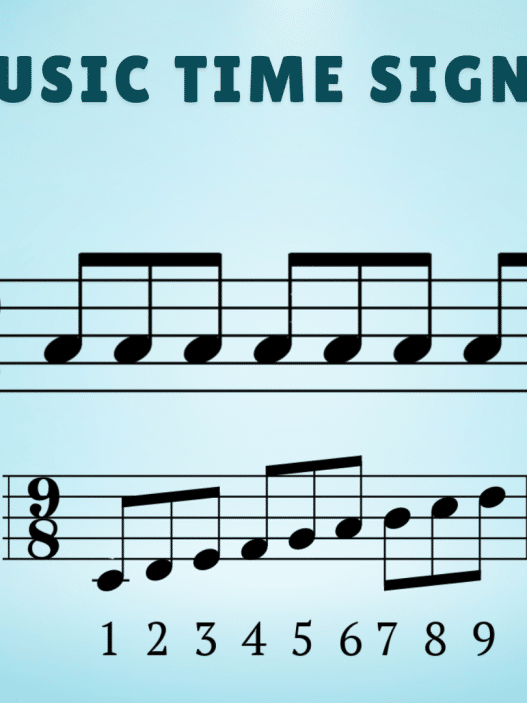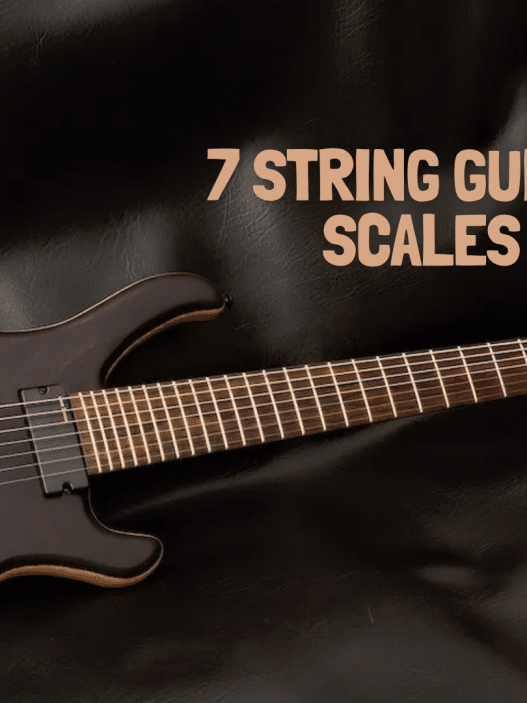Looking for the perfect beat to drop your lyrics on without breaking the bank?
Beat leasing might be the rhythm to your musical success story! This affordable option lets you add professional instrumentals to your tracks while still letting producers earn from their creations.
It’s like finding the perfect musical note that hits right for both artists and beat makers. From basic rights to different agreements, understanding how beat leasing works helps you make smart choices for your musical path.
Get ready to learn how you can mix your voice with quality beats, build your sound, and grow your audience—all without spending big money on exclusive rights. Your next hit song is just a lease away!
What is a Beat Lease?
Leasing a beat means you’re paying to use a music producer’s instrumental track without owning it completely. It’s like renting — you get the right to use the beat under certain terms, but the producer still owns it and can lease it to other artists too.
This model has become especially popular among independent artists, rappers, and singers who want high-quality beats without spending a fortune. Instead of paying hundreds or thousands of dollars for exclusive rights, you can lease a beat for a much lower price, sometimes as little as $20.
Beat leasing allows artists to experiment, record, release, and promote songs affordably. It’s a practical way to build your catalog, test the market, and develop your sound before committing to bigger investments.
Basic Rights You Get with a Lease
When you lease a beat, the rights you receive are outlined in a license agreement. While terms can vary depending on the producer or platform, here are some common rights:
-
Recording rights – You can record vocals over the beat to make your own song.
-
Distribution rights – You’re usually allowed to distribute your song across platforms like Spotify, Apple Music, and YouTube (up to a certain number of streams).
-
Performance rights – Live performance and radio play might be allowed under some leases.
-
Monetization rights – Some leases allow monetization on streaming platforms, but not all.
However, the key limitation is that the producer can lease the same beat to other artists too — so you won’t have exclusive use unless you purchase exclusive rights.
Pros and Cons of Leasing Beats
Before diving into a lease, it’s important to weigh the ups and downs. Leasing can be a great option for many artists — but it’s not for everyone. Here’s a closer look at the pros and cons to help you decide if beat leasing fits your music goals.
Pros:
|
Cons:
|
How Beat Leasing Works?
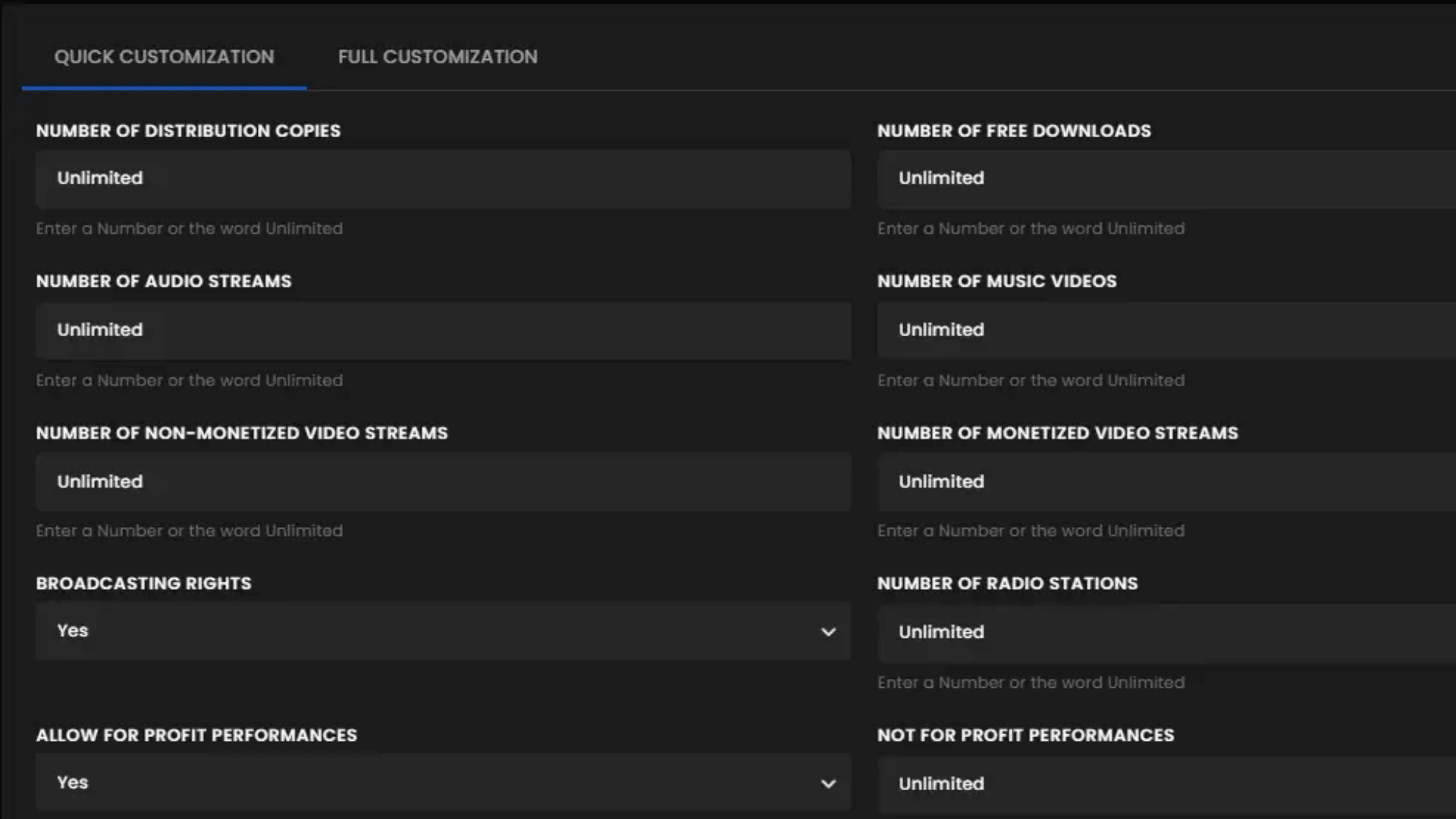
Beat leasing gives independent artists and content creators a practical way to access high-quality instrumentals without needing a massive budget. The process is simple, but understanding the details will help you avoid common pitfalls and get the most out of your lease.
Here’s a step-by-step breakdown of how beat leasing typically works:
1. Browse and Find Beats You Love
Start by searching for beats that fit your style and vibe. You can find beats through:
-
Online marketplaces like BeatStars, Airbit, and Traktrain
-
Producers’ personal websites or music pages
-
YouTube channels with type beats (e.g., “Drake type beat,” “R&B instrumental”)
You’ll usually be able to stream demos directly on the site. Most platforms also label beats by genre, mood, and tempo to help you narrow your choices.
2. Select the Right License Type
Once you find a beat you want to use, you’ll need to choose a license. This part matters — it determines what you’re allowed to do with the beat. Common types include:
-
Basic Lease – Ideal for demos and limited releases. Often includes an MP3 file and restricts how many streams or copies you can distribute.
-
Premium Lease – Offers higher-quality files (like WAV), more usage rights (more streams, sales, and performances), and often includes tracked-out stems for better mixing.
-
Unlimited Lease – No limits on streams, plays, or sales. Still non-exclusive but gives you full flexibility to release and monetize.
-
Exclusive Rights – Full ownership of the beat; once purchased, no one else can lease or use it.
Always review the license agreement closely. It outlines exactly what you can and cannot do with the beat.
3. Make Your Purchase and Get the Files
After selecting your license, you’ll go through a standard checkout process. Once payment is completed, you’ll receive your files instantly via email or direct download. These usually include:
-
The audio file(s) — MP3, WAV, and/or stems
-
A PDF or text file with the licensing agreement
-
Any terms or usage limits you agreed to
Store these files somewhere safe, and always keep a copy of your receipt and license for future reference.
4. Record, Release, and Promote Your Track
You can now create your own song using the beat. Record your vocals, mix and master the track, then distribute it across platforms like Spotify, Apple Music, YouTube, and more — as long as you stay within your license limits.
If you hit a usage cap (like 10,000 streams or 5 public performances), you’ll need to upgrade your license.
5. Upgrade or Buy Exclusive Rights if Needed
If your song starts to gain serious traction — like going viral, getting radio play, or passing stream limits — it’s time to revisit your license. You can:
-
Upgrade to a higher-tier lease for more freedom
-
Buy exclusive rights (if still available) to secure full control and stop others from leasing the same beat
Act fast: producers often sell exclusive rights to the first artist willing to pay, and once it’s gone, it’s gone.
Understanding how beat leasing works empowers you to make smarter choices, protect your music, and grow your audience without breaking the bank. Up next, we’ll dive into the different types of beat lease agreements and what each one means for your music trip.
Types of Beat Lease Agreements
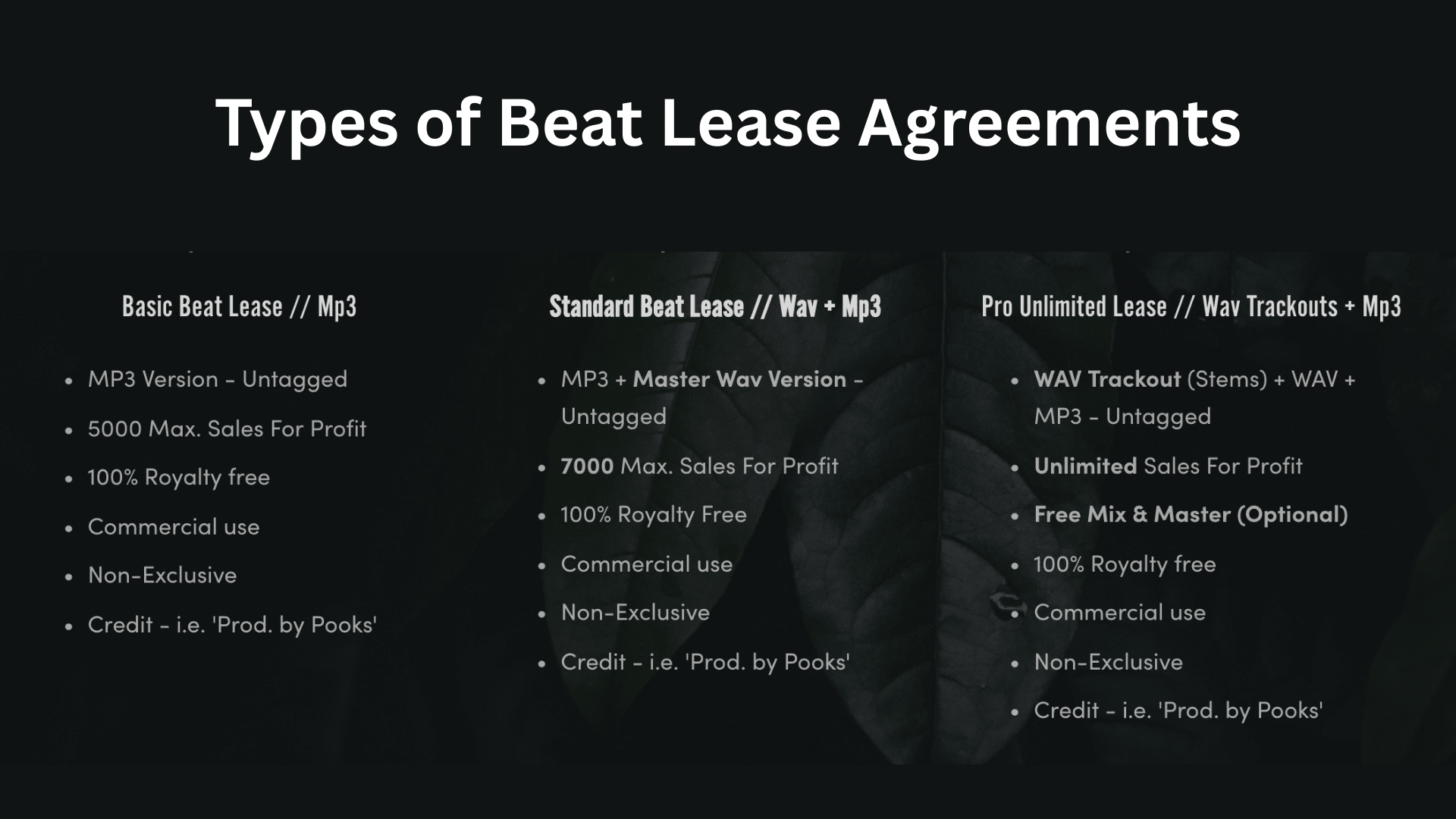
Not all beat leases are created equal. Depending on your goals — regardless of what you are launching one, building an album, or testing your sound — there’s a lease type that fits your needs.
Each agreement offers different usage rights, pricing, and file formats, so it’s important to understand what you’re getting before you buy.
Here’s a breakdown of the most common types of beat lease agreements:
1. Basic Lease
This is the most affordable option and often the entry point for beginner artists.
-
What you get: MP3 file of the beat
-
Typical limits: Stream cap (e.g., 2,000–5,000 streams), limited downloads, no live shows
-
Best for: Demo recordings, mixtapes, or content with a small audience
-
Drawback: Limited rights and lower audio quality; no stems for mixing
A basic lease is perfect for experimenting or releasing music on a budget, especially when you’re just starting out and want to test your sound with a limited audience.
2. Premium Lease
A step up from the basic license, the premium lease gives you more flexibility and better audio quality.
-
What you get: MP3 + WAV files (sometimes stems too)
-
Typical limits: Higher streaming and sales limits (e.g., 10,000+ streams, live shows allowed)
-
Best for: Official releases, growing artists, social media promotion
-
Drawback: Still non-exclusive; others can lease the same beat
The premium lease strikes a balance between quality and affordability, giving rising artists room to grow while keeping things professional and polished for official distribution.
3. Unlimited Lease
As the name suggests, this lease removes most of the typical usage caps.
-
What you get: MP3, WAV, and full tracked-out stems for professional mixing
-
Typical limits: No cap on streams, sales, or performances
-
Best for: Artists releasing singles/albums and planning to push the track commercially
-
Drawback: Still doesn’t grant ownership; others can still lease the beat
With no usage limits, an unlimited lease is ideal for artists ready to go all in on a project and push it without worrying about caps.
4. Exclusive Rights
Exclusive rights mean you’re buying the beat outright — once sold, it’s no longer available to anyone else.
-
What you get: Full ownership, all file formats, and publishing rights
-
Typical limits: No limits — you control how the beat is used, monetized, and promoted
-
Best for: Label releases, major projects, or when building a brand around a unique sound
-
Drawback: High cost and final — usually non-refundable
Exclusive rights give you total control and peace of mind, making them ideal for serious artists who want to own their sound and protect it from being reused.
5. Custom Agreements
Sometimes producers are open to tailoring a lease to fit your needs. These are negotiated directly between you and the producer.
-
What you get: Flexible terms, possibly partial exclusivity or tailored use
-
Best for: Unique projects, commercials, film, or licensing across multiple platforms
-
Drawback: May take time and negotiation; not always available
A custom agreement lets you negotiate terms that suit your creative goals, offering flexibility that standard licenses can’t always provide — especially for non-traditional or commercial uses.
Understanding each lease type helps you stay within your rights and avoid future conflicts.
What to Consider Before Leasing a Beat?
Before leasing a beat, make sure you’re choosing the right option for your music goals. Here’s what to keep in mind:
- Know Your Purpose: Are you releasing a single or just experimenting? Your intent affects the license you need.
- Understand the License Terms: Always read the contract. Know your stream limits, monetization rights, and upgrade options.
- Check File Formats: Need quality audio? Go for leases that include WAV or trackouts, not just MP3.
- Set a Realistic Budget: Pick a license that fits your current stage — don’t overpay for features you won’t use.
- Choose Trusted Producers: Only lease from reliable sources to avoid copyright issues or shady terms.
Final Thoughts: Should You Lease a Beat?
Leasing beats is a game-changer for independent artists — it gives you affordable access to professional sounds without the upfront cost of exclusive rights.
From understanding what a beat lease is, to choosing the right agreement type and license, to knowing what to look for before you click purchase — you’re now equipped to make smart, confident choices.
No matter if you’re checking your sound, releasing a single, or organizing a complete launch, beat leasing provides the adaptability to develop your music career at your own speed.
Ready to start creating? Dive into the world of beat marketplaces, dig lease options, and make music that moves people.
🎧 Have questions or experiences with leasing beats? Drop them in the comments below — let’s talk music!




